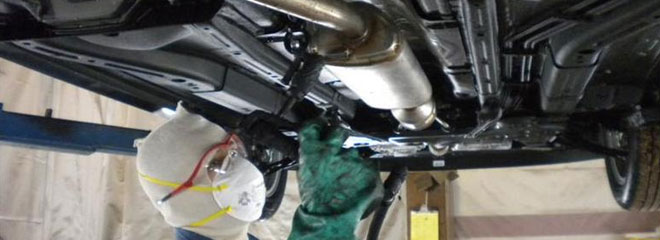While purchasing or maintaining a car, owners often ask about undercoating. This extra service has gathered a reputation for being costly and redundant, since it may, in fact, help lengthen your car’s life and utility. Here we can see some of the significance and types of car undercoating.
Significance
- Undercoating helps to provide an additional layer of insulation and protection to the undercarriage of your vehicle.
- Manufacturers may apply car undercoating at the factory.
- The undercoating covers most of the car’s underside, including floorboards, frames, gas tanks, pans, wheel wells and mufflers, suspension parts, and exhaust pipes. This effect can be likened to black coating a parking lot or a road.
- Undercoating materials adhere to metal, even if it is painted. Most of them come in pressurized cans for easy spray-on application, while an even spread may be tough to achieve without professional applicators.
- Ingredients used in the manufacturing of undercoating include fiberglass, ceramics, rubber, asphalt, and silicone. Each has different properties in terms of heat resistance and retention, but all give protection against the elements and damage.
- Auto undercoating protects the undercarriage, a vehicle’s most vulnerable area. Unlike the visible portions of your vehicle, the undercarriage doesn’t get washed frequently but it absorbs most of the moisture, grime, salt, and other substances when you come in contact with them, as you drive.
- In addition to protecting your vehicle from elemental damage, good undercoating can also reduce engine noise, leaving you quieter than ever before.
- Even if you buy a new car with undercoating from the dealer, remember that undercoating wears off typically within a short period of 1 year. Worn, patchy car undercoating can get damaged when water and other elements then get trapped under the coat, further eroding metal.
Types of undercoating:
There are several types of undercoating available, ranging from do-it-yourself aerosols to professional applications. Some of them are
- Water-Based Undercoats
- Petroleum-Based Undercoats
- Asphalt-Based Undercoats
Water-Based Undercoats
Water-based vehicle undercoating is most popular for the do-it-yourself procedure. You can get it in your automotive parts stores in aerosol formats. These undercoatings are thin-set and take short time to dry. This coating can be done in automotive shops that offer undercoating services at a reasonable rate. The disadvantage of water-based undercoating is that it should be repeated frequently.
Petroleum-Based Undercoats
Petroleum-based undercoating is made from oil and they have greater deflective abilities for road salts and grime. The petroleum base helps repel ice and water better than water-based undercoating. Petroleum-based undercoating can be purchased in your professional vehicle servicing shops. This type of undercoating also needs to be replaced once a year by the owner.
Asphalt-Based Undercoats
Asphalt-based undercoating is the strongest undercoating available and it is used in military vehicles and on all-terrain. Asphalt-based undercoating will last long and is the best option for vehicles that endure heavy road use. Asphalt-based undercoating is the thickest coating and has the most damage-resistant properties. It can be bought from professional services shops and is the only type of undercoating with a limited warranty. You can also buy the asphalt-based undercoating while buying a new vehicle.

